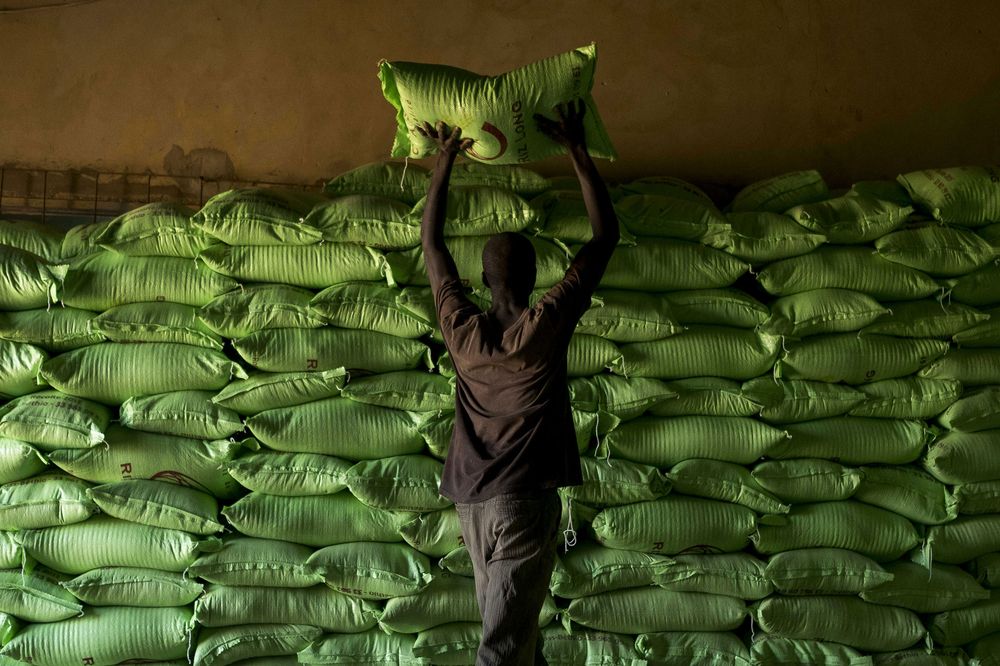Peter Sotamaruti’s 2-acre farm near Bungoma, a village in western Kenya, is minuscule by the standards of the developed world. But it’s double the acreage he tended five years ago. Sales of surplus corn have allowed the 49-year-old farmer and his family to trade up from a mud hut to a three-room brick house with solar-powered lights. His modest profits also cover school fees for his four high school-age children and pay for health insurance, a luxury among farmers in sub-Saharan Africa. “We now treat our farm as a business,” says Sotamaruti, who plans to expand to 4 acres in the next year.
The threat of famine has added fuel to a long-running debate over whether African governments, working in concert with nongovernmental organizations, should do more to promote commercial-scale agriculture and ease the continent’s dependence on subsistence farming. Africa is facing the world’s most severe food crisis since World War II, with some 20 million people at risk of starvation because of a combination of drought conditions and armed conflict.
Famine has revived a debate about scaling up farms on the continent.
Peter Sotamaruti’s 2-acre farm near Bungoma, a village in western Kenya, is minuscule by the standards of the developed world. But it’s double the acreage he tended five years ago. Sales of surplus corn have allowed the 49-year-old farmer and his family to trade up from a mud hut to a three-room brick house with solar-powered lights. His modest profits also cover school fees for his four high school-age children and pay for health insurance, a luxury among farmers in sub-Saharan Africa. “We now treat our farm as a business,” says Sotamaruti, who plans to expand to 4 acres in the next year.
The threat of famine has added fuel to a long-running debate over whether African governments, working in concert with nongovernmental organizations, should do more to promote commercial-scale agriculture and ease the continent’s dependence on subsistence farming. Africa is facing the world’s most severe food crisis since World War II, with some 20 million people at risk of starvation because of a combination of drought conditions and armed conflict.
According to the Food and Agriculture Organization of the United Nations, smallholders provide as much as 80 percent of the food supply in sub-Saharan Africa. Chronically short of money for seeds and fertilizers and lacking the infrastructure to store and ship crops, these farmers are especially vulnerable to the ravages of climate change, to say nothing of civil wars. Still, the debate is not about productivity alone: In Africa, a higher share of the population is employed in farming than in any other part of the world, so policies that favor larger farms would by necessity push some growers off the land.
The issue is taking on new urgency in an age when some donor nations are turning inward. Donald Trump’s budget proposal cuts 37 percent from the U.S. Department of State and the Agency for International Development. That would touch everything from irrigation projects to nutrition programs aimed at schoolchildren.
Christopher Barrett, an agricultural economist at Cornell, says development aid needs to be channeled toward farmers who have the wherewithal to scale up and not drained away on subsistence-level growers, who can be wiped out by a single bad year. “When the commercial-farmer class is growing, they spend in their local community and they stimulate demand for products,” he says. “They’ll hire someone to clean the house, or they’ll start a local company.”
Africa’s commercial farmers encounter many of the same obstacles as smallholders, but they have some longer-term advantages, says Sam Jones, a professor at the University of Copenhagen whose work has focused on African agriculture. In the past, “there was a feeling that smallholder farmers can be more productive because they can take advantage of family labor,” he says. “But technology is playing a larger and larger role in agriculture, and that’s harder for small farmers to get access to.”
The term “technology,” in this instance, includes things such as drought and pest-resistant seeds and chemicals being developed by DuPont Co. and Monsanto Co. specifically for Africa. Smaller farmers tend to save seeds from previous harvests, lowering yields, and they skimp on fertilizer. Larger ones also benefit from access to credit and crop insurance. Jones describes a virtuous cycle in which better-equipped, better-capitalized farmers buy out their neighbors, some of whom become laborers and some of whom find jobs in cities.
Find the original post at Bloomberg's website.


